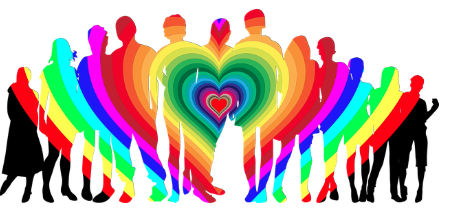Detecting Bias in the News

Bias unfortunately is part of being human. Having opinions are normal and all bias is not bad, but you cannot let it prejudice you against certain groups, individuals, and ideas. According to Common Sense Media's report, News and America's Kids: How Young People Perceive and Are Impacted by the News, kids 10–18 believe that there is racial and gender bias in the news. Even more importantly half of all kids believe children are treated unfairly by the news. In this section you will learn more about detecting bias in the news.
It is very disturbing that our children/students are so easily able to detect bias in the news. (Good that they are able to detect, but bad that there is so much bias and prejudice) They have observed that when non-white kids are in the news it is mostly negative and/or related to crime related news. Only one-third of students interviewed by CommonSense Media believe that the news treats women and men equally fairly. They are also perturbed that when news is reported about their age group that it is reported by grown-ups who have no idea about experiences of people that age. Below are ideas to assist you and your students to recognize bias in the news and how you and they can become proactive to stop the bias.
Steps:
1. Fair.org has published an excellent article on how to detect bias in news media. As you are reading the article there are many pro-active things you can do yourself or with your students.
Some examples are:
-
Demand that those affected by the issue have a voice in coverage.
-
Educate journalists about misconceptions involved in stereotypes, and about how stereotypes characterize individuals unfairly.
-
Demonstrate how the language chosen gives people an inaccurate impression of the issue, program or community.
-
Call or write the newspaper and point out the contradiction
2. Watch the video called The Problem with Fake News and How Our Students Can Solve It.
John Spencer, the author of the video, has 5 Steps of Critical Consuming that would be essential in a media literacy lesson. When you view the video the script for the video is located under it. In the comments, another teacher shared this helpful Google Doc checklist of the 5 Steps which can be copied and used with your students.
3. As a teacher there are various things you can do to teach your students.
-
Expose your students to a variety of news articles. Look at how different media cover the same story.
-
Talk about different perspectives and how one's background and experiences can add bias
-
As a teacher try to be objective and non discriminatory. Even facial and verbal cues can send the wrong message to students.
-
Use the Student News Daily Site with your students. Every Wednesday there is a weekly example of biased reporting. Included is the video or article along with questions and the answers as well as definitions of the type of media bias. (Note: This site has its own bias about the biased reporting.)
4. Finally, watch this Ted-Ed video on How To Choose Your News by Damon Brown.
There is also a lesson plan from Ted-Ed which you can use with your students.
There will always be bias in the news, but our students can make a difference in the future. They can help change the news to be less biased. There are good news sources which our students can use in the classroom.
Move on to Best News Sources to learn about the recommended resources.
Standards
Addressing the ISTE Standards For Educators
Learner
1a. Set professional learning goals to explore and apply pedagogical approaches made possible by technology and reflect on their effectiveness.
1c. Stay current with research that supports improved student learning outcomes, including findings from the learning sciences.
Leader
2b. Advocate for equitable access to educational technology, digital content and learning opportunities to meet the diverse needs of all students.
2c. Model for colleagues the identification, exploration,
evaluation, curation and adoption of
new digital resources and tools for learning.
Citizen
3a. Create experiences for learners to make positive, socially responsible contributions and exhibit empathetic behavior online that build relationships and community.
3b. Establish a learning culture that promotes curiosity and critical examination of online resources and fosters digital literacy and media fluency.
3c. Mentor students in safe, legal and ethical practices with digital tools and the protection of intellectual rights and property.
3d. Model and promote management of personal data and digital identity and protect student data privacy.
